Sorted by date Results 51 - 75 of 393

I was cleaning out my hunting vehicle as I do every year after the deer and turkey seasons. This time, however, I done a more thorough cleaning. I found licenses from several years back and from different states. A long time ago, I thought I would keep a license from every state I’ve hunted in. But I didn’t. I figured they would only remind me of all the times I came home empty handed. The other reason is they are all pretty much the same. The colors or size may be different, but they all contai...
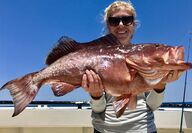
August 6, 2025 - MOODY, AL - Alabama's Gulf Coast fishing community is set to benefit from a new emergency rule issued by NOAA Fisheries that increases red grouper catch limits and extends the recreational fishing season through the end of 2025. The move follows an updated stock assessment showing red grouper populations are healthy enough to support expanded harvests while maintaining sustainability. "This emergency rule means more time on the water catching more red grouper, and it is good...
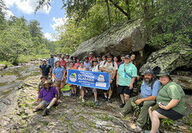
Educators are expanding their education this summer in a rather unusual class setting – Alabama State Parks. The Teacher-Educator Workshop Adventures series takes 25 educators on a first-come basis to visit State Parks in the five different districts in the state to learn about the wealth of outdoor educational opportunities. The 2025 workshop series, titled Teaching Outside the Walls: Alabama's Ecology in Action, focuses on themes from Southern Wonder: Alabama's Surprising Biodiversity, a b...

If you've traveled to Dauphin Island in the past two years, you've obviously noticed all the work that's ongoing along the Dauphin Island Causeway. Rows of riprap, piles of dredge material and heavy equipment dot the east side of the roadway for more than 3 miles. The Dauphin Island Causeway Shoreline Restoration Project is being done in three phases to enhance and protect the only access road from Dauphin Island to the Mobile County mainland. Phase 1 included building segmented breakwaters...

Florida's 2025 recreational bay scallop season is set to open August 16 in the Gulf County Zone, which includes all of St. Joseph Bay. The season will run through September 24, offering residents and visitors a chance to harvest these prized shellfish under regulated guidelines designed to protect marine habitats and ensure safety. Where You Can Harvest The Gulf County Zone covers all state waters from the Mexico Beach Canal in Bay County to the westernmost point of St. Vincent Island in Frankli...
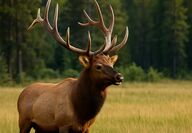
August 1, 2025 - MONTGOMERY, AL - The Alabama Department of Conservation and Natural Resources has reaffirmed and expanded its restrictions on the possession, sale, importation, and release of certain non-native animals and fish, citing ecological risks and public safety concerns. Under Rule 220-2-.26, it is now unlawful for individuals or entities to bring into Alabama a wide range of exotic species, including invasive fish, venomous reptiles, and non-native mammals. The regulation aims to...

The Alabama Department of Conservation and Natural Resources (ADCNR) announces a new shooting sports event series that will take place at four ADCNR public shooting ranges starting in August 2025. The first event in the John H. Wallace Pistol Challenge will run from 8 a.m. until noon at the Etowah Public Shooting Range on Saturday, August 9. The range is located approximately 5 miles north of Gadsden, Alabama, on Owl's Hollow Road in Etowah County. "The John H. Wallace Pistol Challenge is the...

July 31, 2025 - TALLAHASSEE, FL - The Florida Fish and Wildlife Conservation Commission (FWC) is excited to announce that registration is now open for the 2025 Seatrout Symposium, taking place August 27, 2025, at the Hilton Daytona Beach Oceanfront Resort in Daytona Beach, Florida. Event Registration This is a free, full-day event that is open to the public. Registration is required for each attendee. Space is limited, so we encourage early registration to secure your spot. Register now at...
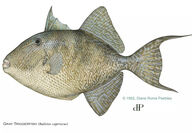
The 2025 recreational season for gray triggerfish in Gulf state and federal waters will open Aug. 1. The season is scheduled to close on Jan. 1, 2026. If you plan to fish for gray triggerfish or other specific reef fish species in Gulf state or federal waters from a private recreational vessel, you must sign up for the State Reef Fish Angler Designation. As a State Reef Fish Angler, you could be selected to receive a mail survey component of the State Reef Fish Survey. By participating in the...

One of the goals for the Alabama Department of Conservation and Natural Resources (ADCNR) is to use Alabama-sourced materials as much as possible for construction projects, especially for the $228 million in expenditures to upgrade, renovate and enhance its 21 State Parks around the state. The use of ductile iron pipe manufactured in Alabama in those projects was celebrated last month at Lakepoint State Park on the banks of Lake Eufaula in southeast Alabama. Conservation Commissioner Chris...

A native son was honored Monday when the Christopher Blankenship Eco-Tourism Area & Kayak Launch was unveiled to the public on Dauphin Island at Aloe Bay. The honoree was reared on Dauphin Island and started work as a deck hand on Capt. Mike Thierry's Lady Ann charter boat as a teenager. He continued his Dauphin Island connection as an enforcement officer with the Alabama Department of Conservation and Natural Resources' (ADCNR) Marine Resources Division (MRD). In 2017, Alabama Governor Kay...
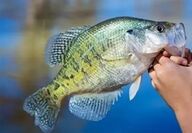
Alabama's sweltering summers may send some anglers indoors, but for those in the know, the warm months offer prime opportunities to reel in two of the state's most beloved freshwater species: crappie and bream. From the winding channels of the Tennessee River to the quiet coves of Lake Jordan, Alabama's diverse aquatic landscape provides a bounty of fishing spots where these panfish thrive-even when the mercury rises. Why Summer Fishing Still Shines While spring is traditionally hailed as the...

The Alabama Department of Conservation and Natural Resources (ADCNR) has reopened the Bay Watch Public Boat Ramp in Baldwin County. The facility was temporarily closed for parking area upgrades in May 2025. The ramp is located adjacent to the U.S. Highway 98 bridge at the mouth of the Fish River. "The improvements at Bay Watch will benefit anglers, boaters and visitors to Weeks Bay Reserve for decades to come," said Chris Blankenship, ADCNR Commissioner. "We've been upgrading public boat ramps...

Even though it’s only July, the deer hunters are getting prepared for another season. While it may be several weeks until the season opens, there is much to do to be ready for opening day – especially if you hunt with bow and arrow. Right now, I’m checking trail cameras, hanging tree stands and trying to figure out where the deer are likely to be early in the season. And it is not always where one might think. I am reminded of an Alabama hunt several years ago. I was with a friend on a piece of...

Many years ago, when I first started Outdoor Truths, I wanted to be connected with some hunting and fishing companies. I felt like any association would help me grow the influence I wanted to have. I was not only able to get some sponsorships, but I actually became a pro-staff member for a few of those companies as well. Even now, I hesitate to even mention the name “pro-staff” because it involves the word “pro.” And if there is any word that I should never be associated with, it’s the word...
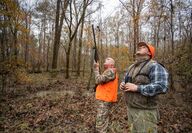
June 20, 2025 - MONTGOMERY, AL - The Alabama Department of Conservation and Natural Resources' (ADCNR) Outdoor Alabama Academy is expanding its hunting workshop offerings starting this summer. The popular outdoor recreation how-to workshops will now be available for more activities and in graduated levels. New for 2025 the workshops will be offered in 101, 202, and 303 levels for archery, bowhunting, squirrel hunting, and deer or turkey hunting on public land. The workshops are part of ADCNR's A...
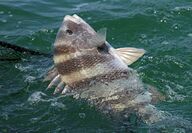
June 27. 2025 - MONTGOMERY, AL - The Marine Resources Division (MRD) of the Alabama Department of Conservation and Natural Resources (ADCNR) has made the following changes to the state's saltwater fish creel, bag, possession and size limits (regulation 220-3-.30). These regulation changes were approved by the Conservation Advisory Board at their May meeting and signed by ADCNR Commissioner Chris Blankenship on June 17, 2025. "The changes were made to balance the need to conserve our saltwater...

June 27, 2025 - TALLAHASSEE, FL - The Florida Fish and Wildlife Conservation Commission (FWC) is preparing to implement a new law aimed at strengthening vessel accountability and enhancing protections for Florida's waterways. Senate Bill 164, signed into law by Governor Ron DeSantis on June 19, will go into effect on July 1, 2025. This legislation is designed to help reduce the number of at-risk and derelict vessels across the state and improve enforcement tools for FWC officers and partner...

I’ve never been much for hiking even though some of my friends love it. And I feel the same way about camping. I’ve often said if I’m camping, there needs to be a hunting or fishing trip involved somewhere. Otherwise, I would prefer a weekend getaway in a condo and breakfast at Cracker Barrel. That idea goes for hiking as well. When I walk through the woods, I can’t help but continually scout for signs of animals I may want to hunt. I can’t imagine just walking through the woods to get to a...
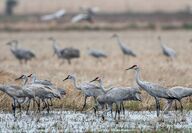
How farmers can help rescue water-loving birds James Gentz has seen birds aplenty on his East Texas rice-and-crawfish farm: snow geese and pintails, spoonbills and teal. The whooping crane couple, though, he found “magnificent.” These endangered, long-necked behemoths arrived in 2021 and set to building a nest amid his flooded fields. “I just loved to see them,” Gentz says. Not every farmer is thrilled to host birds. Some worry about the spread of avian flu, others are concerned that the bir...
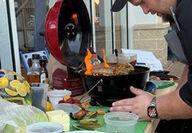
In its first year under the Sweet Grown Alabama banner, the Alabama Seafood Cook-Off recently continued its legacy of highlighting Alabama-grown products, especially Alabama Gulf Seafood, with delicious, innovative seafood preparations. With four teams competing for the prestigious win at The Wharf in Orange Beach, Chef Ben Rosen and Sous Chef Walker Hughes of Auburn's The Depot garnered the crown with their "Alabama Summer" dish of marinated, pecan-grilled cobia, sweet corn with Bill-E's...
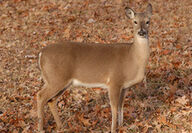
Although complaints about dog deer hunting have fallen dramatically in the past several years, dog deer hunting has continued to cause conflicts, particularly around the Talladega National Forest. The Alabama Conservation Advisory Board provided Conservation Enforcement Officers with the Alabama Department of Conservation and Natural Resources' (ADCNR) Wildlife and Freshwater Fisheries (WFF) Division another tool to deal with dog deer hunters who cause problems. At the Board's meeting last week...

The motto for many turkey hunters this year is, “So close, and yet so far away.” It really is amazing sometimes how close we can be to a good gobbler and yet be unable to take a shot. More than one person has bemoaned this truth to me. I empathize with them. Just today, I got as close to a roosted tom as I possibly could without being seen. He flew down and paced the side of the hill just over the crest from where I was set up. He probably got as close as 40 yards, but I could never see him...

Tim introduced Jonathon and I to sight fishing last year, during a crappie fishing trip. Then, we only used that method for a few hours. This year’s trip was two days of this technique. And after those two days, we had nearly 100 fish in our cooler. While sight fishing has a few nuances, our method was to use the fishing-finding equipment on the boat to locate underwater structures and to identify the crappies on those structures. Once we identified them, we would cast our bait and watch for t...

This year’s turkey season was full of all kinds of different experiences. I shot and killed. I shot and missed. I witnessed lots of gobblers strutting just out of range and others close enough, but just behind me. There were four jakes that constantly came to my decoy party and would stay until I ran them off. I hunted in the cold, the heat, and the rain. Some days I walked miles and other days I set up only a few feet from my truck. At times there were so many turkeys roaming around my farm, I...